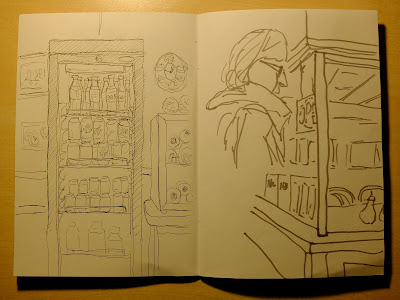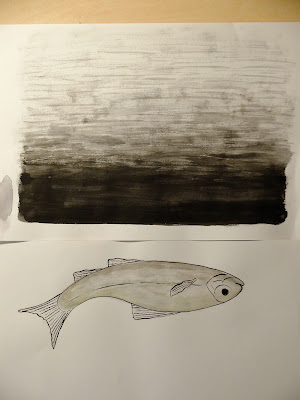Not quite knowing the 'process' to collage, I just started cutting out images that I liked or that I thought would work together. At first I think I was being too obvious, trying to find bodies to put heads on, and people that would fit perfectly together in an interaction, but this was stifling and didn't really lead anywhere. It wasn't until I let go and just arranged random elements together that I came up with my first creation, this funky looking bald fella with jazzy pants, pointed shoes and clouds for arms:
Do I like it? Probably not.
But I do believe it is interesting and engaging and almost funny? I think as an example of letting go and just creating something without the fear of failure it is a testament to perseverance and the random, unknown nature of collage, and once I had created this, got over the blank page, then I felt more excited to carry on and make more discoveries.

These two are my favourite. Fair enough they are simple in their nature, but I feel like they tell more of a story and develop the idea of character more than the first. Maybe because they are more figurative and less 'silly' means I like them more...but they are hardly serious. I just feel like as images they are much more successful, combining elements of photography and pattern and shape to recreate areas of human forms and clothing which changes the personality of the figure.
I am also really quite drawn to this last collage I made, from cutting up one image in equal horizontal pieces and rearranging them, bringing each row down underneath the one it should be on top of. I love this idea of rearranging photographs to create somewhat abstract and interesting new images, that in some places accidentally line up again to create other forms. This is the kind of thing I have created in the past and hope to push this further, inspired by the work of Anthony Gerace, who commonly uses grids in his collage work, and the rearranging of portraits to hide areas and create narratives within one image.



































